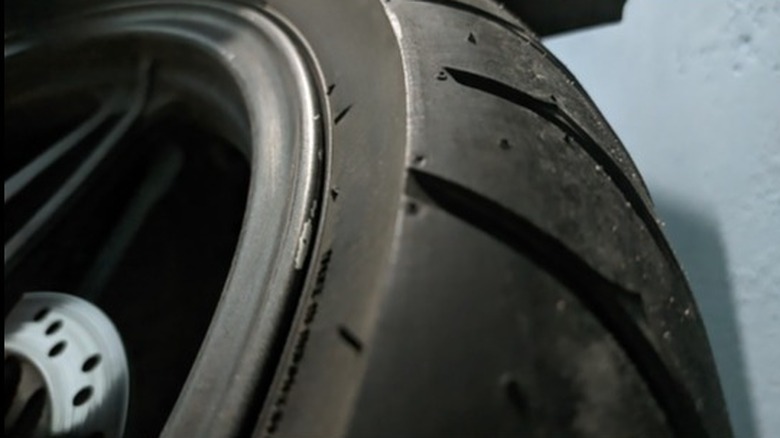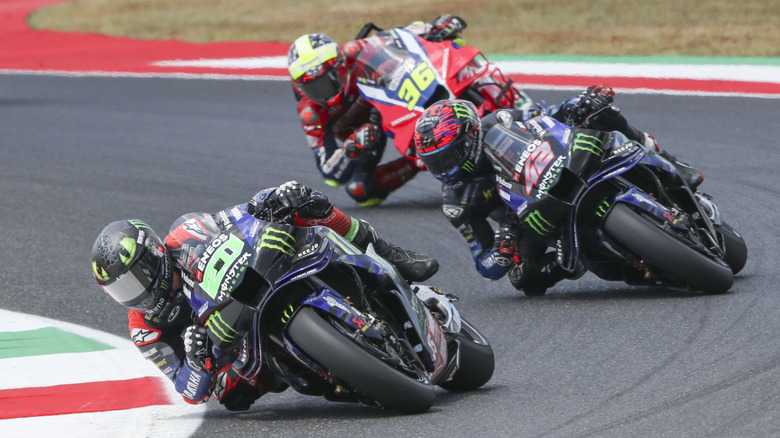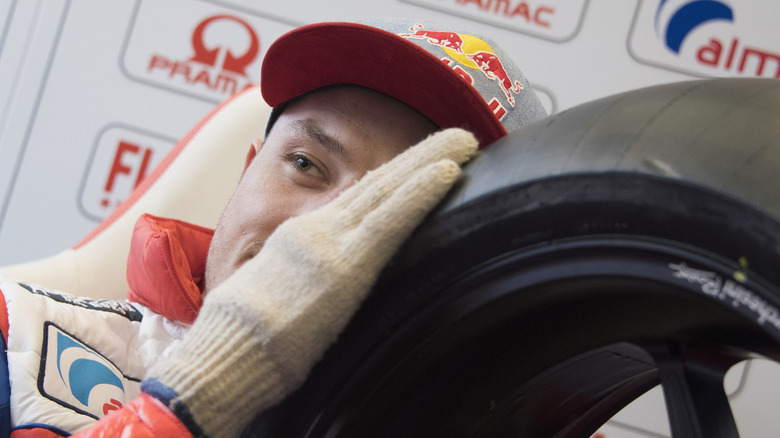What Causes 'Chicken Strips' On Motorcycle Tires? (And How Can You Prevent Them?)
Motorcyclists can be a funny bunch: uncompromisingly individualistic, and at the same time, hopelessly gregarious. Bikers often love to cut that 'lone wolf' figure on their rumbling machines, but also can't resist congregating in groups, riding in packs, and joining clubs. Along with the feeling of camaraderie, riders are also prone to copping the kind of good-natured ribbing, joking, and rivalry that is par for the course when on a track meet or club run.
If you have to explain a joke, it is no longer funny — but let's do it anyway. 'Chicken strips' is a play on words, taking a phrase usually applied to a deep-fried, spicy, tender morsel of fast food to mildly mock and denigrate a rider by suggesting he or she may not be using their bike to its fullest capacity: they are a bit chicken, in other words.
A chicken strip, in this sense, refers to an unworn area on the extreme edge of a motorcycle tire tread pattern, the part of the tire that would grip the road when the bike is at an extreme lean angle, cornering at speed. If you can feel the difference between a Yamaha R1 and a Yamaha R7 at its limits, or spend your weekends ripping up the track on an Aprilia RS4, or enjoy hitting the apex on a Ducati Panigale, then you might be the kind of rider who will wear down this part of the tire. No chicken strips for you.
How far can I push it, anyway?
How far a motorcycle can lean into a corner, or the lean angle, depends as much on the bike as the rider. Most of us will never ride like Valentino Rossi, and is no shame in that. Those of us who use our machines as a form of transport may push the lean angle up to about 20 degrees when going hard into a corner – far short of the 65 degrees we see in Moto GP, where riders are out of their seats, knees grazing the asphalt, cornering at speeds that push the boundary between rubber and road.
If you want to corner this hard and low just to say goodbye to your chicken strips, then say hello to the lowside crash. One of the most common types of motorcycle crashes, a lowsider is where the tires lose traction and the bike slides out from underneath the rider. Contributing factors can include wet roads, slippery patches of oil or gravel, too much weight on the front wheel, too much throttle, or too much lean angle.
When your tires can no longer provide the lateral traction to keep the bike upright, both you and your bike will hit the deck on the lowside — that is, on the side of the bike that is leaning into the corner. Which is better than a highsider, where the rider is thrown over the opposite side of the bike, but still undesirable.
The chicken strip takeaway
Before you take a wood rasp to your tire in an effort to rub out your bright, shiny chicken strips — no, seriously, do not do that — note that an unworn area at the extreme edge of a tire is not necessarily a bad sign. It could be that you live in Oklahoma, where the roads are straight and long, and you love highway riding. Or perhaps you use the proper riding position when cornering: leaning with the bike, shifting your body weight and center of gravity to reduce the lean angle.
By remaining upright, and leaning the bike down into a corner, a rider can wear the edges of the tires — but this is no way to control a motorcycle. Some bikes have a limited lean angle, and when ridden within their limitations, chicken strips are unavoidable. The tread wear on a heavy cruiser with running boards, or a bike with low foot pegs, crash bars, or even a boxer engine, will be more centered than on a sports bike, which is built to corner fast, with a steep lean angle.
If you still want to get on your bike and work out until those chicken strips are lean and mean, you can try heading out to the curviest roads in America – or better still, join a sport bike association and spend some time at the track, with proper safety gear, and fewer hazards.


